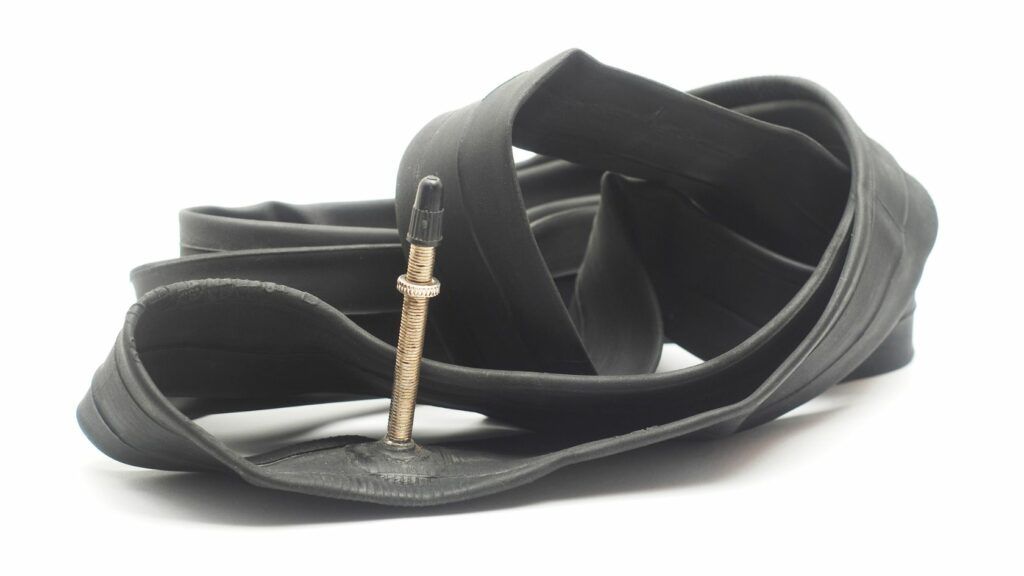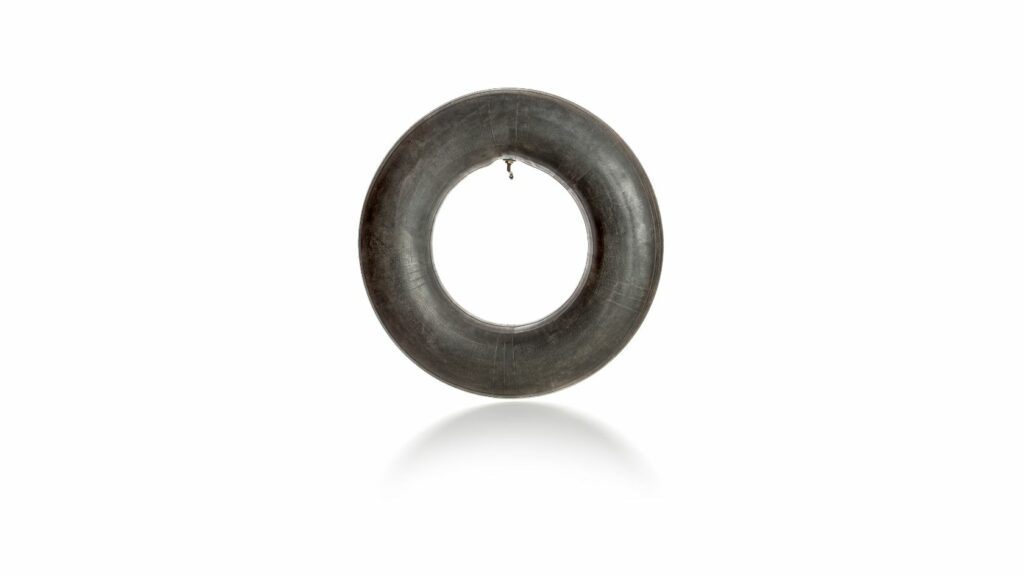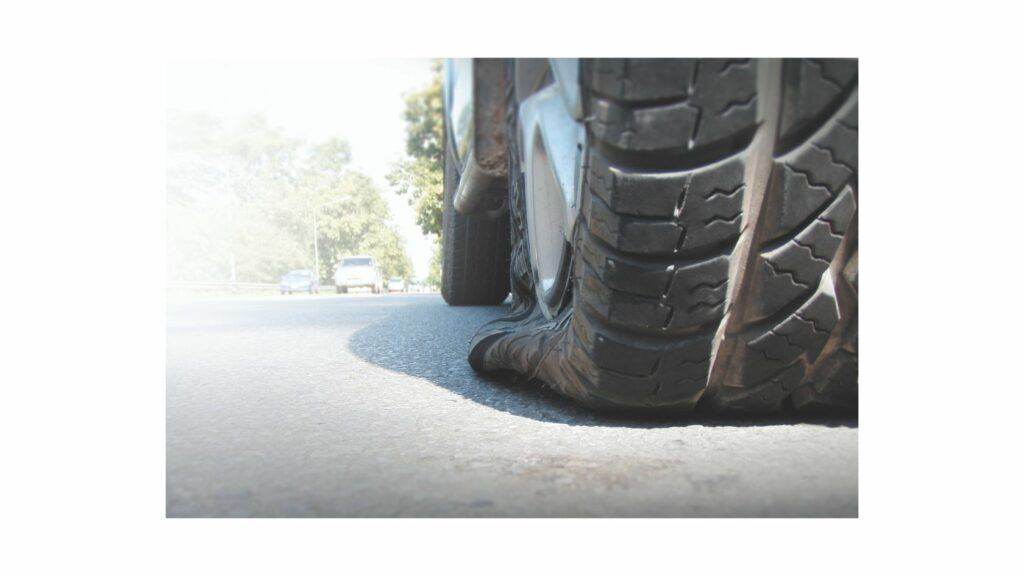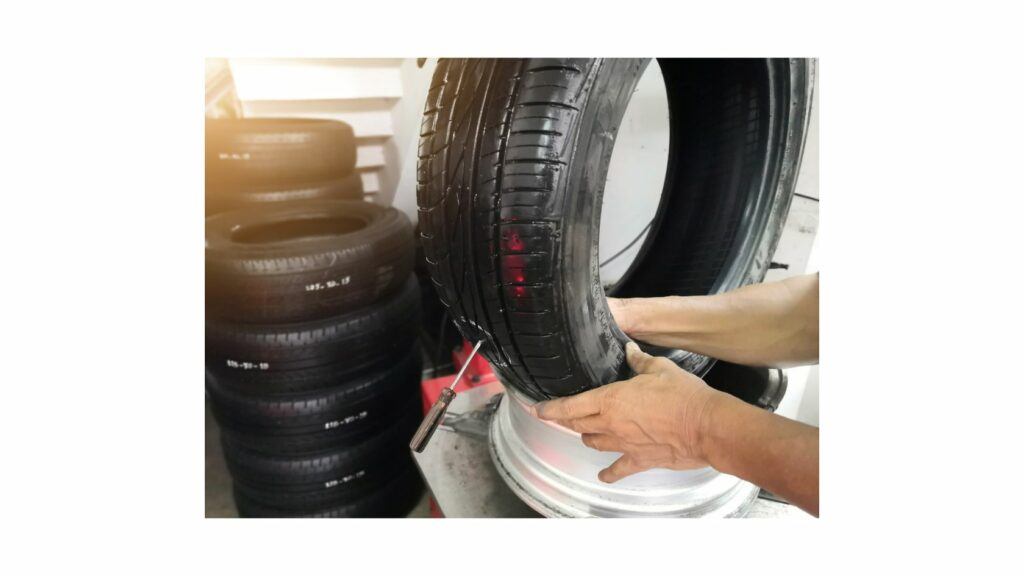
Did cars ever run on tires with tubes in them? If yes, then why don’t car tires have inner tubes now?
With the invention and dominance of tubeless tires, the tubes have taken a backseat. However, tube-based tires have not completely disappeared. Bicycles, heavy trucks, and some off-road vehicles do run on tires with tubes.
In this post, you will learn why tube-based tires are overshadowed by tubeless ones. I will also tell you about the advantages and disadvantages of having tires with inner tubes and if you can use the tubes inside of a tubeless tire.
Why don’t car tires have inner tubes?
In modern times, most car manufacturing companies rely on tubeless tires. This is because tires with inner tubes are often prone to punctures and lack effectiveness in handling on-road pressures.
Simply put, inner tubes that are made of softer inflatable rubber are vulnerable to catching punctures and going flat very quickly especially, on rough and edgy roads.
As a result of punctures, tires with inner tubes lose the air completely making them useless for a further run.
Some of the other reasons that make tube-based tires a no-no are their inability to withstand heat, higher deflation rate, cumbersome puncture repairing process, and lack of durability.
It is not a big matter of concern however, if you prefer tube-based tires over tubeless ones then you should know the reasons for such tires getting flat and also the steps to prevent them.
First of all, it is important to know…
The material used for inner tubes and tubeless tires
The material used to manufacture inner tubes is made of thin, air-tight rubber which remains relatively soft to hold the air. It is similar to a filled-up balloon with soft outlining rubber.
This material also plays an important part to provide a reliable seal between the tire and the wheel. Its flexibility is instrumental in keeping and maintaining the shape of tires.

To protect the inner tubes, the outer part is made of a hard shell of rubber.
Regardless of the flexibility, the softness of inner tubes lacks stability and strength to fight the outer obstacles.
On the other hand, tubeless tires are made of thick rubber and other synthetic materials including nylon, and polyester.
The thick rubber itself provides a flexible and air-tight seal to hold the air together. The combination of other materials ensures greater strength and durability compared to a tube-based tire.
Hence, many vehicle companies are favoring tubeless units to sell their cars.
If you are still running your vehicle on tires with inner tubes make sure to observe serious caution while driving on rough roads because of the soft material inside.
Secondly, avoid going too far continuously in hot weather conditions to prevent overheating of tires which can blow out the tubes.
Overheating
Talking of overheating, all types of tires are prone to getting flat with long running in the hot sun. In some cases, you may witness tires blowing out and exploding with a large sound.
While it may take some extra running and really exaggerated temperatures for tubeless tires to go flat, tube-based tires surrender prematurely.
Overheating conditions increase the friction levels between the tube and the tire. The softness of tube material is unable to withstand the heat generated by this friction causing them to go flatter in no time.
As advised earlier, it is better to avoid driving in overheating conditions, especially with tube-based tires. In case, you don’t have any choice but to drive, do it with limited speed on better roads.
Deflation
With inner tubes, the deflation rate is much higher and faster compared to a tubeless tire.
Soften tube when punctured releases the whole air completely. This creates a dangerous situation on the road as the deflation doesn’t provide ample time to control the vehicle.

Faster deflation also doesn’t permit the vehicle to go too far which can make repairs difficult.
The only solution to keep moving in such a situation is to replace the tires with spare ones. To do this make sure you know the replacement process to avoid leaving any loose ends.
Puncture repairing process
The process of repairing tube-mated tires is more-lengthy as well as tedious. While a tubeless tire can be repaired by just finding the puncture and using a repair kit to fix it, a tube-based tire has multiple steps involved in repairing.
You need to displace the whole tire, remove the tube, find the puncture, repair it, and then put all the parts together which is very demanding, and grueling.

The repair is performed by professionals which means you will have to take the tire to a tire specialist.
Periodic maintenance, cleaning, and proper inflation are some of the steps you must perform to avoid frequent punctures.
Durability issues
Tubes are the main culprit to reduce the durability of a tire. Tube-based tires have a tendency to lose air early compared to tubeless tires which means attracting more trouble on the road.
Because of the tube, there are increased chances of air leakage and punctures. The sad part is tubed tires cannot be filled with sealant to quickly seal any small punctures which is very common with tubeless tires.
Since the tube is the only barrier between the tire and the outside environment, maneuvering at high speeds on the road is a big problem to transfer proper weight across the tire. This results in im-balancing of a vehicle which in turn increases the probability of punctures.
Fragile tubes, repeated punctures, and constant repairing on tires make them wear out early reducing their age and durability.
As a word of caution, ensure to monitor the condition of tubed tires very often. Check the signs of wearing on tires especially returning from a long journey.
In case of any abnormalities, take the vehicle for tire repair and ensure they are completely fixed and properly inflated.
Tubeless tires are progressive advancements to tubed tires.
Compared to tires with inner tubes, tubeless versions are better equipped with air protection features, strong material, adequate capabilities to counter on-road hurdles, and more importantly fewer amounts of punctures and flatness.
Add to that, tubeless tires are lightweight and cost-effective. These are the main reasons why modern cars don’t have tires with inner tubes.
Why can’t tubeless tires have tubes?
Tubeless tires were invented with the intention of overcoming the inefficacies and vulnerabilities of tubed tires. It doesn’t make sense to insert a tube in a tubeless tire unless you are completely choiceless.
From a technical point of view, tubeless tires are designed to be used without inner tubes.
As a matter of fact, tubeless tires are not without tubes. Yes, there is an inner clincher ring made of soft rubber placed inside the tire casing which is the same as a tube but instead of residing separately, it forms part of the whole tire.
The internal structure of a tubeless tire is built to prevent air leakage with the help of an airtight seal that holds the valve stem and bead edge together. The thick rubber material used to create tire sidewalls makes tubeless tires more flexible.
On the contrary, inner tubes bond well with thin sidewalls which is helpful in generating minimum friction.
When the inner tubes are installed inside a thick sidewall of a tubeless tire it could reverse the friction effect causing the tire to blow out with immense heat.
So, if you are thinking or planning to use a tube inside a tubeless tire then it is not recommended and you know the reason why.
When did car tires go tubeless?
Tubeless tires became popular in the late 1950s. With ongoing research, advancement, and technology it has become a standard component for a majority of modern car manufacturing companies.
Do car tires have sealant?
Car tires have seals to protect the air leakage however, if you are thinking of a car tire built with internal sealant then it’s a no.
Yes, you can use the liquid sealant from external sources designed to fix and fill small punctures on all types of tires.
Final thoughts
Rather than the type of tires your vehicle has what matters is how you use and maintain them.
Having tube-based tires is not wrong. It’s just that the innovation of tubeless tires has revolutionized the way cars run on the roads.
You can continue to use tubed tires provided you know how to deal with them. We have found the causes that affect their performance.
Keeping the balance of proper inflation and maintenance along with some precautions while driving can make the life of inner tubes longer.
For day-to-day running and aggressive driving, I suggest you switch to tubeless tires. Remember, I said switch and not to stuff the tubes in a tubeless tire.
